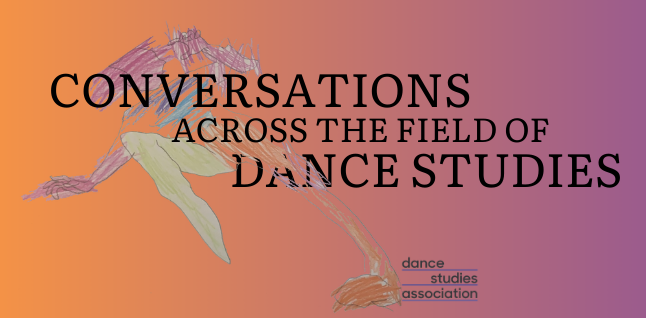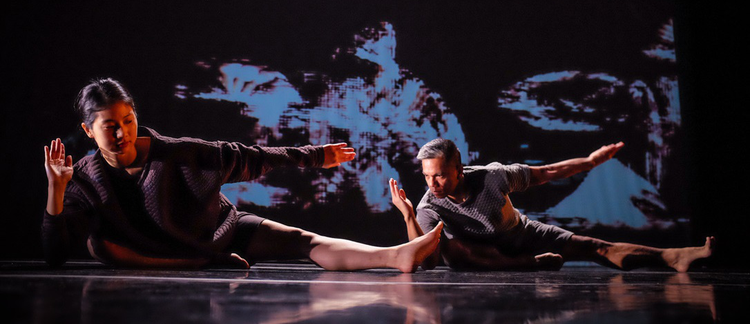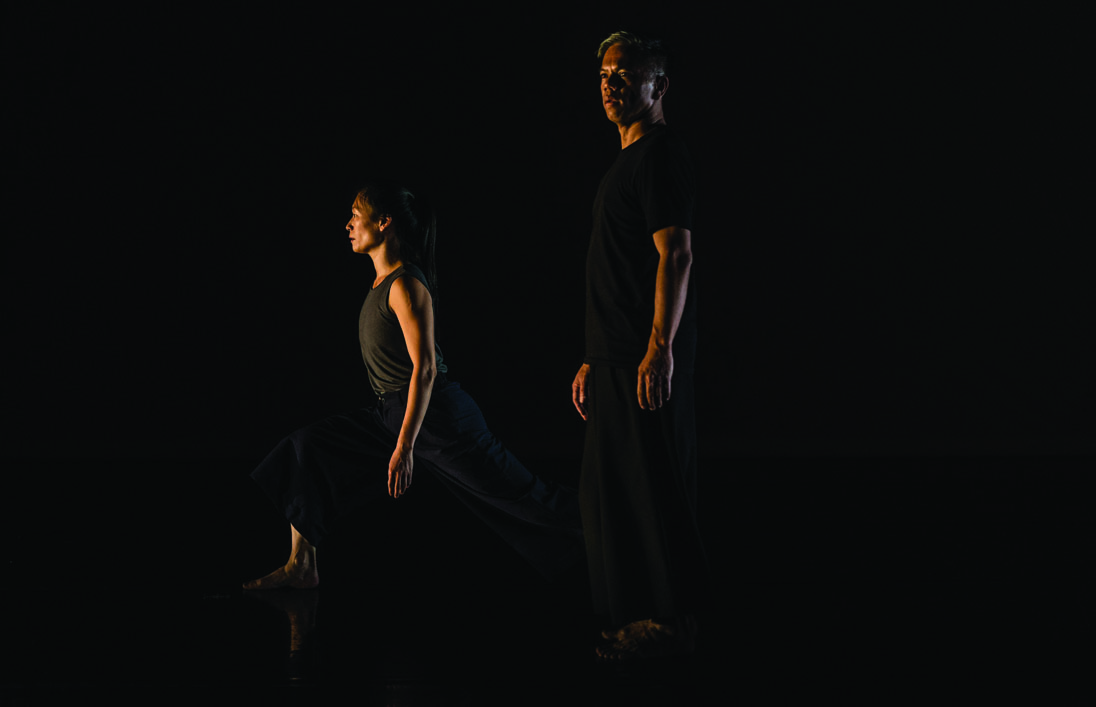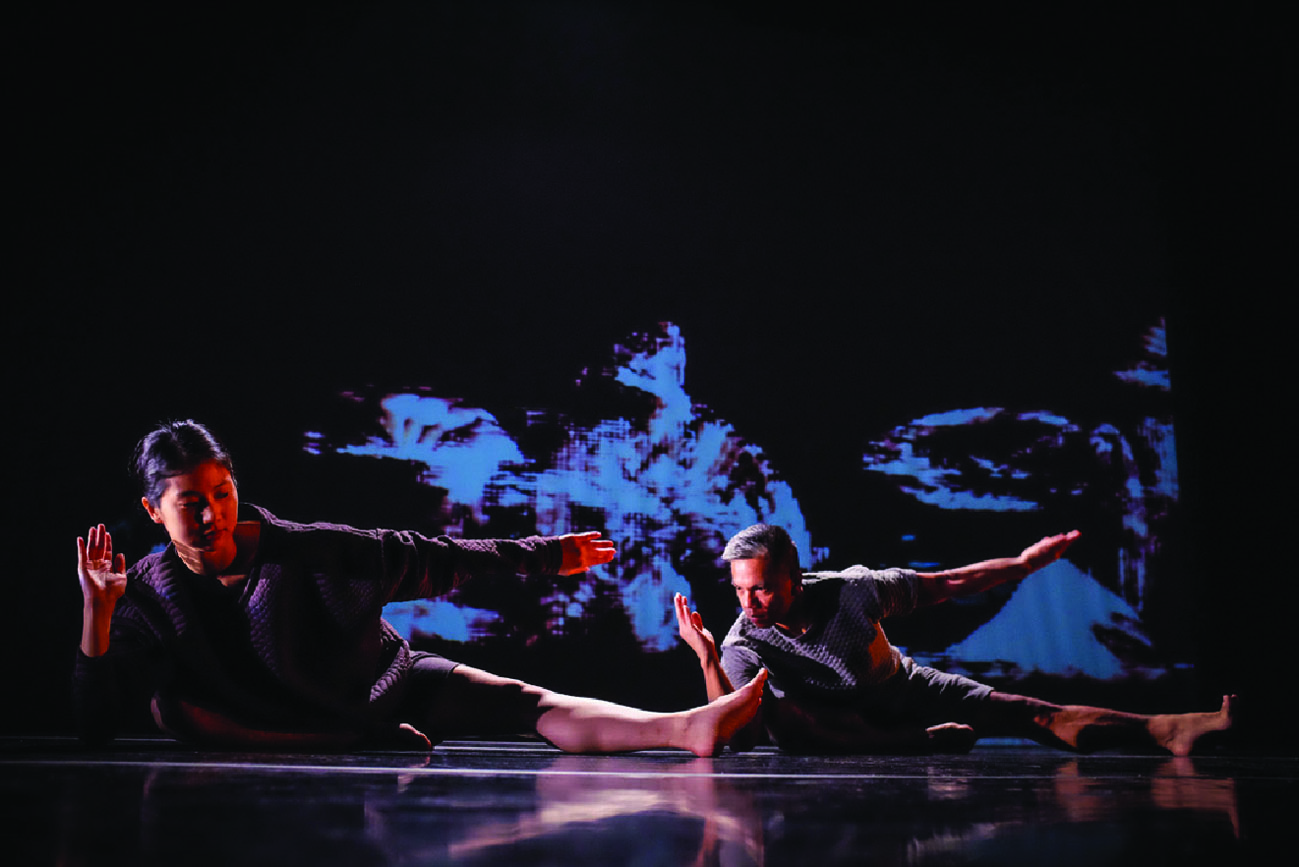It was a typically hot, rainy Sunday in Hong Kong. I turned the corner, walked up a set of stairs to cross the busy street, and encountered an elevated flyover full of Filipinos enjoying an early dinner of adobo, barbeque, and pancit—foods typically served in fiestas and other community-gathering spaces. People were playing bingo, dancing, and singing along to karaoke. The mood felt celebratory, and folx were enjoying each other’s company. After walking by several spaces with similar scenes across Wan Chai, a commercial district where many Filipinos gather from the various places where they work for expatriates and local Hong Kong households, I realized that these Filipinos were part of the large group of Overseas Filipino Workers (OFWs) that make up much of the workforce of many countries outside of the Philippines. These countries include Hong Kong, Australia, Japan, the United Arab Emirates, Canada, and the United States, among others. In 2020, there were 1.77 million OFWs living outside of the Philippines contributing to approximately 9% of the national economy through remittances.1
Demand for domestic and healthcare workers has remained consistent in recent years, and Filipinos make up much of the care economy in many countries around the world. In the foreword to Grace Chang’s Disposable Domestics: Immigrant Women Workers in the Global Economy, Ai-jen Poo writes, “Domestic work—the work of caring for children, elders, and homes—is the work that makes all other work possible.”2 It’s difficult for me to read those lines, especially because this essential labor, and the invisible labor that many immigrants of color (especially women) take on, continues to go unacknowledged by society. And even though their work is incredibly important, as individuals they are perceived as disposable and easily replaced. It is crucial to contextualize the role of these workers in the context of global economic systems and to understand why they are made to be invisible by design.
Even though they were all celebrating being with one another, I couldn’t help but feel a mix of happiness and sadness seeing so many of my countryfolk out and about on this rainy day. I understood that they were gathering to be with their community and to be away from their workplaces, which are often also the households where many of them live as domestic workers and caregivers. Some of their living conditions are reportedly terrible—housekeepers, nannies, and caretakers sleeping on the floor in the kitchen or in tiny rooms that also serve as pantries or laundry rooms. Many are emotionally or physically abused, and since labor standards vary greatly from country to country, it is difficult to understand the scope of how OFWs are treated or to track incidents of violence so that their well-being can be protected.
How I felt that afternoon also reminds me of my experiences growing up as a queer, immigrant, first-generation, Filipino-American. Since arriving in the United States as a young child, I have always felt othered, out of place, and, as Claudia Rankine puts it, “I was always aware that my value in our culture’s eyes is determined by my skin color first and foremost.”3 This continued through college, at the Juilliard School, where I studied modern dance and ballet, two Eurocentric forms that are typical for most conservatories around the world for training dancers and choreographers. Although there were other electives such as tap, “Spanish,”4 jazz, and Indian dance,5 at the center of the curriculum were always these Western forms against which everything else was measured. Those of us who come from non-Western countries felt disoriented and invisiblized by the forms we were studying and inevitably how we grew to see ourselves (or not) through the practice of performance. This reality has led me to want to understand how Asian immigrant dance artists in predominantly white countries have adjusted to assimilate, mimic, and thrive despite having to disavow their own cultural forms, which they have abandoned for the sake of being legitimized by contemporary dance or ballet. I acknowledge that although I begin this essay with a memory of me witnessing OFWs in Hong Kong and the conditions of global migration by Filipinos in the diaspora, I am not trying to conflate this very different phenomenon with my experiences in contemporary dance settings. I do not equate my background as a dancer to those of the Filipinos in Hong Kong. I open with the story of the Filipinos gathering on the flyovers every Sunday in order to emphasize the poignant importance of small moments of connectivity for marginalized people.
In 2016, I started to collaborate with Na-ye Kim to create Cover Your Mouth When You Smile. Na-ye was born in Seoul and trained at The Royal Ballet School in London and then obtained her MFA from New York University (NYU) Tisch School of the Arts, where she was my student. Kim is a gorgeous dancer who seemingly can do anything with complete effortlessness. We wanted to create a dance that reflected our shared experiences as Asian artists navigating the world of conservatories and classical techniques. After receiving a PhD in dance education from Seoul National University, Kim worked as a lecturer at the Hong Kong Academy for the Performing Arts, where she invited me to begin this collaboration. What we made began to form the structure of what would become a much larger piece that would include a third dancer, Peiling Kao, a Honolulu-based Taiwanese choreographer. Peiling trained at the Taiwan National University of the Arts, where she studied with dancers from the Cloud Gate Dance Theater, Taiwan’s premier dance company. Kao received an MFA from Mills College, where she studied improvisation, composition, and postmodern dance—forms that would become the foundation of her work as a choreographer. In 2017, Kao, Kim, and I traveled to Hong Kong, where we completed work on the trio. This piece eventually premiered in June 2018 during my company’s 20th anniversary at ODC Theater in San Francisco and traveled to the Kuan Du Arts Festival in Taipei in 2019 and to the Seoul International Improvisation Festival in 2022.
In our publicity materials, we described Cover Your Mouth When You Smile as
From its inception, we wanted to collectively create a work that contemplates our experiences as Asian artists in predominantly white settings. Our work endeavors to be a reclamation of identity that weaves together fragmented memories, racial politics, and ethnographic storytelling. It questions the power of representation and reimagines what it means to be Asian in contemporary dance by subverting viewers’ expectations of what our bodies as Asian subjects look and feel like within a white canon.a movement essay that explores the condition of racial melancholia, the impossibility of the model minority, and the concept of mimicry in Asian immigrant cultures. Referring to racial melancholia and ambivalence (as described by Eng and Han) as a physical and psychical haunting resulting from estrangement from Western, mainstream cultures dominated by whiteness,6 Cover Your Mouth When You Smile examines the complexities of racial identity in contemporary life.7
Making this piece with two other Asian artists and educators was a relief because we could reflect on our individual experiences while also finding a healing space through the collective processing of our struggles with the whiteness we encountered in our training, our experiences as immigrants, and our work as professors. It was not uncommon for us to find shared cultural rituals such as making and eating rice. In fact, the piece begins with a ritualized performance of Kao washing and cooking rice while Kim and I sit nearby observing and waiting with anticipation. As one of the more indelible parts of the dance, the rice cooking represented one of the ways that we felt closer to our families while being away from our communities. The simultaneous activation of senses—smelling and seeing the steam rising from the rice cooker—implanted an embodied/emotional response to the work by spectators. Many have said that the smell of the rice cooking reminded them of home, which gave rise to memories that evoked comfort and well-being. It was interesting to note how a simple prop could serve as an important, mnemonic device—in contrast to the abstracted movements we were performing throughout the piece.
In the wake of rising anti-Asian hate and in order to endure the social and physical violence of being an Asian immigrant, one must deploy specific tactics. These include blending in, being excessively productive, and being always agreeable and nice—traits that form the contours of the model minority myth. In the middle of the piece, Kim and I enact a series of repeated steps devised through a system of numbers randomly selected and mapped onto a spatial pattern on the floor. These repeated steps not only signify our connection to minimalism as a formalist structure but also invoke a new way of expressing ourselves through a rigid structure that begins to look like a maze, and where we inevitably must find each other in order to find a way out. It reminds me of what the artist/scholar micha cárdenas refers to as writing code (or an algorithm) as a mode of representation. “While algorithms are often understood only in terms of precision, they can be written at any level of abstraction and thus are similar to poetic writing. Choreography, or improvisation parameters, can also be seen as a series of instructions, like an algorithm.”8 Rather than creating a narrative about the myth of the model minority, Kim and I employ abstraction and repetition to reflect our exhaustion from being in systems that assume who and how we are supposed to be. As Asians, we reimagine, through choreographic defiance and algorithmic subversion, what it might feel not to be in constant adjacency to whiteness. We refuse to be seen only as Asian subjects with pre-assigned choreographic values, such as being efficient and precise—and following cárdenas—we are choreographing on a level of abstraction that challenges precision and reassigns poetic values that subvert what that may look like on our bodies. Although using repetition may be a risk in succumbing to the invisiblization of our laboring bodies in space, what happens instead is a reclamation of our identities through solidarity. We realize just how much of a relief it is to work through oppressive systems using choreographic defiance when we see each other in the space and are reminded that we are not alone.
The duet that Kao and I perform was made in Mānoa, on the campus of the University of Hawai’i. While creating it we referred to the natural landscape as a source of inspiration. One can see our hands, at the beginning of the dance, tracing the ridgeline of Diamond Head, the iconic geological feature that is significant to O’ahu’s topography and skyline. We also begin the dance in silence, using only our feet to create rhythms that emphasize the groundedness we felt when we would look up at Diamond Head. Our hands also invoked the waves in the ocean and its dynamic repetition. In a small way, we wanted to honor the land on which we were creating this duet, as well as the ocean’s inescapable force. The rhythmic foot patterns were devised through the use of our birthdays. We wrote down the month, day, and year we were born and began charting a pattern that also reflected a loosely based nod to numerology, and since we were working with our birthdates, we were also playing in the realm of astrology and the divine. These seemingly simple connections between land, sea, and stars helped to form a path through this dance as a way to create something that is pre- or anti-colonial, or, as they say in anthropology, “precontact.” This method of uniting our embodied senses to our environment was a way to work outside of more conventional Western choreographic strategies. We eventually also utilized familiar choreographic devices such as retrograde, diminution, and theme and variation; however, by beginning with our connection to land, sea, and stars, our collaborative experience felt more grounded and connected us more deeply to each other.
As I reflect on the work I’ve done with Na-ye Kim and Peiling Kao, as well as the many other Asian dance artists with whom I have had the pleasure of working, it is clear how much these relationships have helped me to find strategies of survival. In a similar fashion, those Filipinas on the bridges in Hong Kong and their joyful connections to their communities have helped me to reflect how I am not alone in the struggle against the social violence and psychic pain of racism and white supremacy and that these solidarities with other Asian immigrants have helped to reimagine what it means to be Asian today. Transnational, artistic collaborations such as Cover Your Mouth When You Smile form a network of support that makes our lives as Asian immigrants more radically visible and powerful because we are creating spaces for our collective futures in which anti-Asian sentiments no longer exist.
Notes
- Philippine Statistics Authority, “2020 Overseas Filipino Workers,” https://psa.gov.ph/statistics/survey/labor-and-employment/survey-overseas-filipinos. ⮭
- Ai-jen Poo and Grace Chang, Disposable Domestics: Immigrant Women Workers in the Global Economy (Chicago: Haymarket Books, 2016), vii. ⮭
- Claudia Rankine, “I Wanted to Know What White Men Thought About Their Privilege: So I Asked,” New York Times Magazine, July 17, 2019, https://www.nytimes.com/2019/07/17/magazine/white-men-privilege.html. ⮭
- Gloria Marina taught Spanish dance forms, which included fandango and flamenco rhythms, braceo, and castanets. ⮭
- Juilliard called it Indian Dance, but technically I studied Bharatanatyam from Indrani. ⮭
- David L. Eng and Shinhee Han, Racial Melancholia, Racial Dissociation: On the Social and Psychic Lives of Asian Americans (Durham and London: Duke University Press, 2019), 4–5. ⮭
- Gerald Casel, “Geraldcaseldance at ODC Theater,” Press release, May 1, 2016. ⮭
- Micha Cárdenas, Poetic Operations: Trans of Color Art in Digital Media (Durham and London: Duke University Press, 2022), 56. ⮭
Author Biography
Gerald Casel (he/they/siya) is a dance artist, equity activator, and anti-racist educator. As director of GERALDCASELDANCE, his choreographic work complicates and provokes questions surrounding colonialism, collective cultural amnesia, whiteness and privilege, and the tensions between the invisible/perceived/obvious structures of power. Casel is Professor and Chair of the Department of Dance at Mason Gross School of the Arts at Rutgers University. He has previously been a faculty member at NYU Tisch School of the Arts, Palucca Hochschule für Tanz Dresden, the University of Wisconsin–Milwaukee (UW–Milwaukee), California State University Long Beach, and UC Santa Cruz, where he also served as the Provost of Porter College. A graduate of The Juilliard School with an MFA from UW–Milwaukee, they received a New York Dance and Performance Award “Bessie” for sustained achievement for dancing in the companies of Stephen Petronio, Michael Clark, Stanley Love, Zvi Gotheiner, Sungsoo Ahn, and the Metropolitan Opera Ballet. His initiative Dancing Around Race, an ongoing community-engaged participatory process that interrogates systemic racial inequity in the San Francisco Bay Area and beyond, continues to grow. www.geraldcasel.com
Works Cited
Cárdenas, Micha. Poetic Operations: Trans of Color Art in Digital Media. Durham and London: Duke University Press, 2022.
Chang, Grace. Disposable Domestics: Immigrant Women Workers in the Global Economy. Chicago: Haymarket Books, 2016.
Eng, David L., and Shinhee Han. Racial Melancholia, Racial Dissociation: On the Social and Psychic Lives of Asian Americans. Durham and London: Duke University Press, 2019.
Hong, Cathy Park. Minor Feelings, an Asian American Reckoning. New York: One World, 2020.
Maps, Dennis S. “2020 Overseas Filipino Workers.” Philippine Statistics Authority. https://psa.gov.ph/statistics/survey/labor-and-employment/survey-overseas-filipinos. Accessed May 1, 2022.https://psa.gov.ph/statistics/survey/labor-and-employment/survey-overseas-filipinos
Rankine, Claudia. “I Wanted to Know What White Men Thought About Their Privilege: So I Asked.” New York Times Magazine, July 17, 2019. https://www.nytimes.com/2019/07/17/magazine/white-men-privilege.html.https://www.nytimes.com/2019/07/17/magazine/white-men-privilege.html



